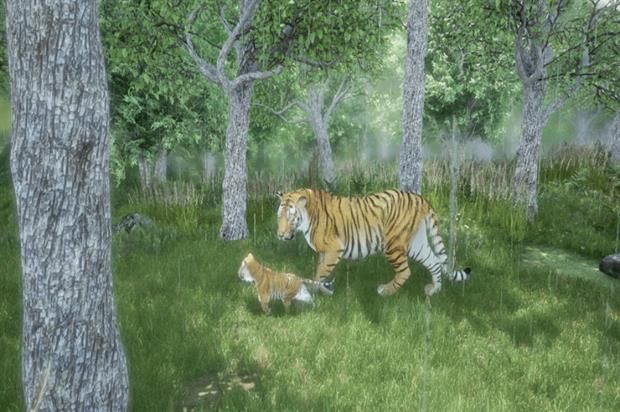
WWF's Newest Tiger Conservation Campaign Leverages Virtual Reality
Laura McQuarrie — July 22, 2016 — Social Good
References: wwf.org.uk & eventmagazine
A new tiger conservation campaign from WWF aims to increase awareness about this endangered species with a steadily decreasing population. WWF's three-minute Tiger Experience is being hosted at Westfield Shepherds Bush atrium and the Westfield Stratford gallery, giving people the chance to put themselves in the shoes of a ranger who walks through a lush forest where these creatures roam freely. The VR experience is meant to give viewers a look into the dangers of poaching, as well as the importance of contributing to tiger protection programs.
Following the launch of this activation, WWF has plans to make the CGI video available online in both interactive 3D and 2D 360-degree video formats.
WWF's director of public fundraising, Kerry Blackstock, notes: "We are working to double the number of tigers in the wild to over 6,000 by 2022 and to achieve this important goal we need support and greater awareness for this global issue."
Following the launch of this activation, WWF has plans to make the CGI video available online in both interactive 3D and 2D 360-degree video formats.
WWF's director of public fundraising, Kerry Blackstock, notes: "We are working to double the number of tigers in the wild to over 6,000 by 2022 and to achieve this important goal we need support and greater awareness for this global issue."
Trend Themes
1. Virtual Reality Conservation - The combination of virtual reality and conservation efforts creates a new way to educate and engage the public about endangered species and their protection.
2. Interactive Wildlife Simulators - The use of interactive simulators provides a more immersive and engaging way for people to learn about conservation efforts and spark action towards protecting wildlife.
3. Accessible Conservation Education - Making virtual reality and interactive education available online allows for greater accessibility and education on global conservation issues.
Industry Implications
1. Conservation Organizations - Conservation organizations can utilize virtual reality and interactive simulators as a tool for fundraising and increasing awareness about animal protection initiatives.
2. Tourism - Virtual reality and interactive simulators can be used as an attraction for animal conservation and wildlife tourism, creating a more sustainable and educational form of tourism.
3. Educational Institutions - Virtual reality conservation education can be implemented in schools and universities to provide students with hands-on experience and increase awareness about the importance of conservation efforts.
1.6
Score
Popularity
Activity
Freshness























